
 Tech
TechInTheGarageMedia.com

 IMAGES BY THE AUTHOR
IMAGES BY THE AUTHORn the last installment of our Speedway Motors C10 build, we gathered up a derelict ’68 C10 shortbox and dragged it back to our shop. What was left of the old truck was carefully taken apart and the chassis was blasted and treated to a fresh coat of epoxy and black urethane. Now it’s time for the fun part to begin with the install of our G-Comp rear suspension, a rebuild of the front suspension with some new parts for a lowered stance, and an upgrade to the brakes.
Though our truck wasn’t much to look at, the chassis was exceptionally straight and rust-free. The glaring exception was a rear crossmember that had been crudely torched at some point in this truck’s eventful past. We were eager to get rid of this eyesore, so we elected to start at the rear. We selected the Speedway Motors G-Comp C10 Coilover Truck Arm Rear Suspension kit for its bolt-on installation, improved geometry, and adjustability over the stock suspension, not to mention the addition of coilovers. The fact that the kit included a fresh new crossmember direct from our fab shop that would replace the hacked stocker was icing on the cake.
Before we got started with the suspension install, we bolted in a Speedway Motors C-notch kit. This kit worked well with the G-Comp rear, requiring only a small hit with the grinder to clear the Panhard bar bracket. The notch kit promised plenty of clearance for the G-Comp’s lower ride height.
We were eager to bolt in our trick new suspension, but we had some work to do before we got to the fun part. The factory crossmember, Panhard bar bracket, and truck arm pivot brackets needed to be removed, which meant that the factory rivets needed to go as well. We used a combination of grinding, drilling, hammering, and air chiseling to get ours free. Just remember that those factory holes will be reused with the G-Comp brackets, so don’t let them get oversized or otherwise out of shape.
With the stock pieces removed, we were ready to mock up our G-Comp suspension. Note that we did this before any parts were painted, then disassembled for paint before moving onto final assembly. We started with the new crossmember and truck arm pivot brackets that came with the kit. The G-Comp suspension allows for adjustment to the truck arm pivot points to dial in driveline angle and make instant center adjustments. The same front brackets also utilize some nifty cams to fine-tune rear axle alignment.
With the crossmember and brackets installed, we were ready to move onto the axle housing. Instead of spending time and money upgrading the stock axle, we elected to use a brand-new Bolt-In 9-Inch Housing, fully assembled Speedway Motors Third-Member with a 3.50 gear ratio and a weld-on Universal Disc Brake Kit. This setup was sure to handle the power that we planned to throw at it with the added bonus of converting from the stock six-lug axles to the later 5-on-5 bolt circle. Whether using a new housing or your truck’s original, the only welding necessary is the attachment of the Panhard bar bracket to the housing.
Before we made anything permanent, we mocked everything up at ride height and carefully measured to several reference points to be sure we were centered and aligned. We measured 12-3/8 inches center to center on the shock lengths to determine our ride height. We then set up approximately 6 degrees of driveline angle using some angled shims between the housing and the truck arms. Finally, we measured (and remeasured) to be sure the housing was centered. Finally, the Panhard bar bracket was tacked in place.
At this point, we were ready to pull the rear suspension apart to fully weld the new Panhard bar bracket, cut the stock Panhard bracket off, then prime and paint everything. All that remained was final assembly and we were ready to move onto the front.
Our goal with this truck is not to win at the autocross or lay frame. Instead, we’re after a lowered driver that sits right and is ready for lots of miles out on the road. To reach those goals, we chose a tried-and-true recipe to drop our C10’s frontend and make it stop better, starting with a Speedway Motors ’63-70 Complete Front Suspension Kit. This kit comes with everything you need, down to the nuts, bolts, and cotter pins, to lower the ride height and convert pre-’71 trucks to stock-style disc brakes. In addition to the brake kit, this kit also includes 2-1/2-inch dropped spindles, 2-inch dropped springs, and shocks designed for the lower stance. That combined 4-1/2 inches of drop will be noticeable without being excessive.
We also chose to upgrade to a set of tubular upper and lower control arms. The arms were installed first, followed by the dropped springs. Next up came the spindles, taking care to point the caliper brackets to the rear. At this point the included wheel bearings were packed, seals installed, and rotors slid into place. The brake calipers were installed with the included slide bolts and we were pleased to find new brake hoses were included as well. The kit included new upper shock mounts and even the bolt for the bottom of the shock. With the shocks bolted up, we were ready to wrap up our install. Working with the fresh, new parts from the Speedway Motors kit made this all a breeze and we even surprised ourselves by finishing it all up in a morning.
Power steering was a luxury that didn’t make the cut when our truck was ordered from GM. We decided to make the upgrade using a new power steering box. As a part of the install, we also chose to use a Chevy Pickup Front End Rebuild Kit to freshen up the rod ends and tie rod components. With all of these new parts, about all that was left from the factory steering setup was the centerlink and idler arm bracket, which had to be liberated from the crusty remains of our stock suspension, blasted, and painted. With the dirty work done, we bolted up our new box along with the new rod ends, idler arm, and power steering pitman arm.
Next was the moment of truth. A rolling chassis is always a big moment, and we couldn’t wait to see the results of our altitude adjustment, even if there was no weight on it yet. We bolted up a set of 15×8 front and 15×10 rear Speedway Motors Rally Wheels with some redline radials for that requisite ’60s vibe and dropped the jack. We couldn’t help but grin at the sight of our freshened chassis with a noticeably lowered ride height. Moments like these are what fires us up to keep pushing through the rest of the build, and we were already scheming on a hopped-up junkyard LS engine to drop between the ’rails. Stay tuned as our C10 receives its heart and makes some surprising power!






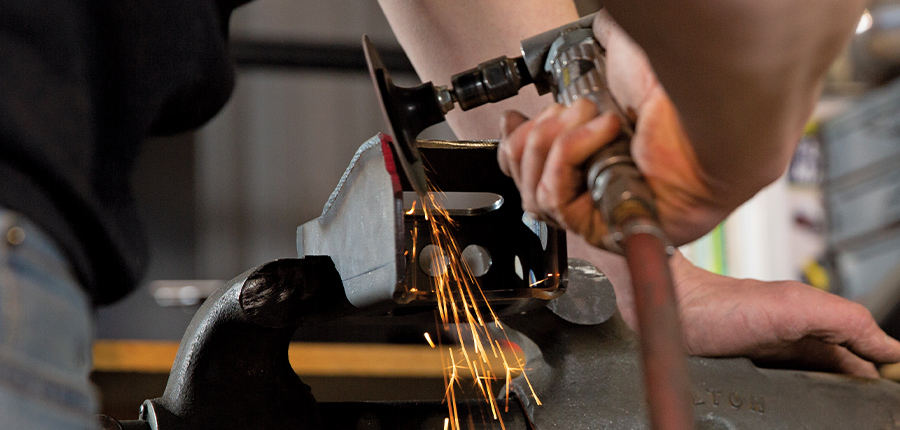

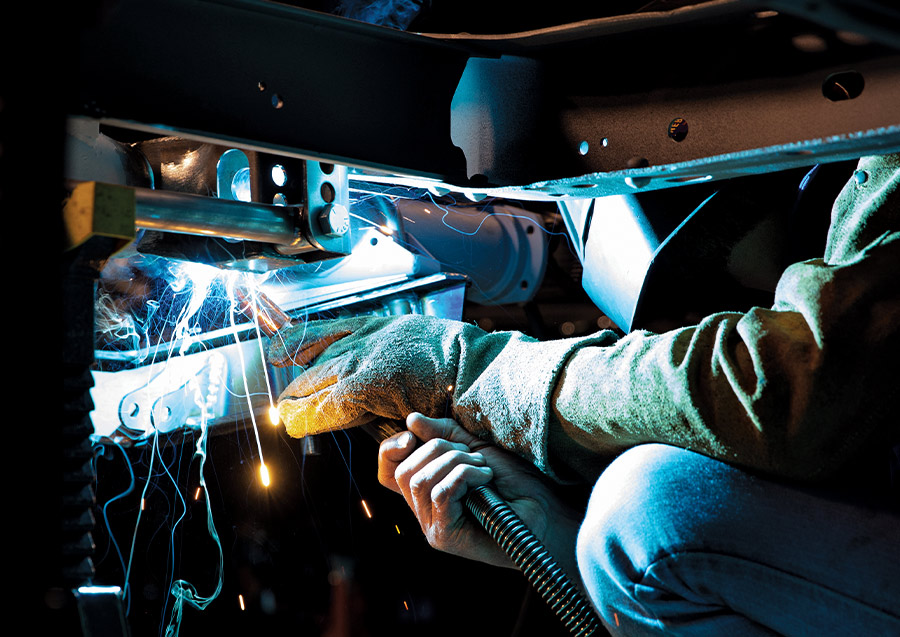

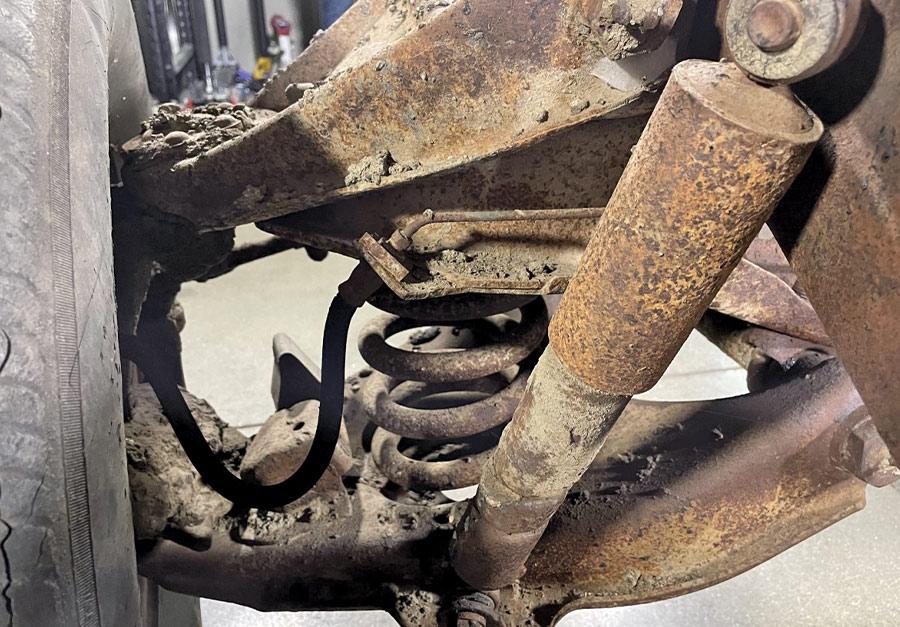
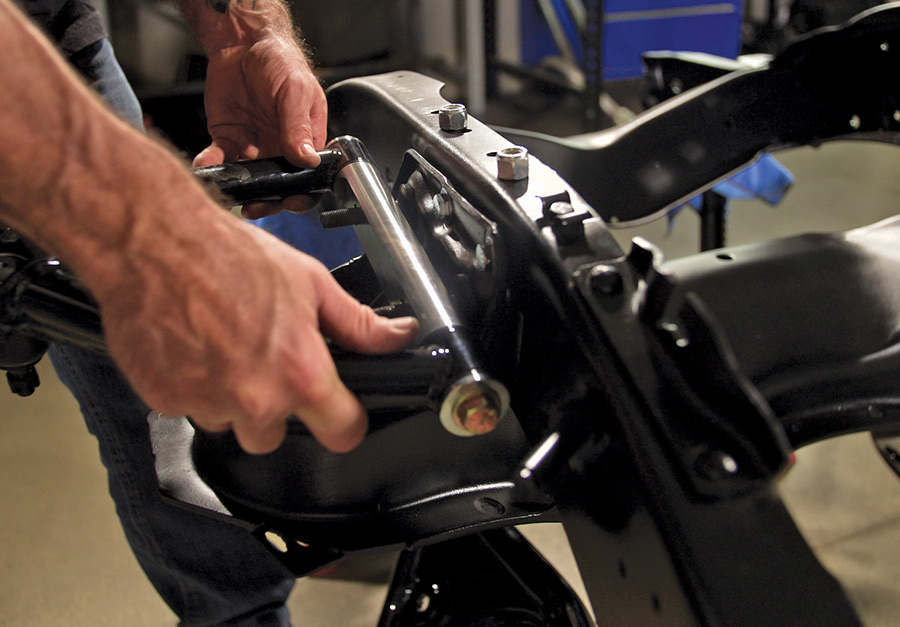














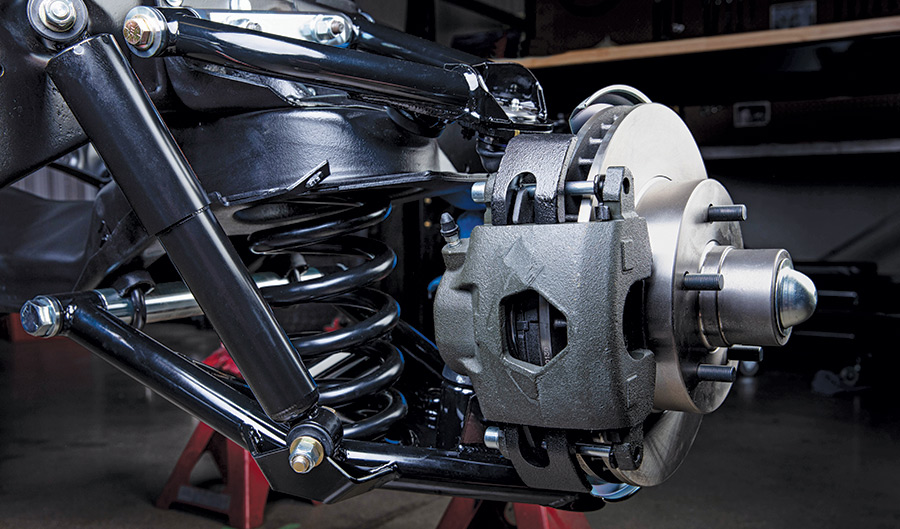


 SOURCE
SOURCE